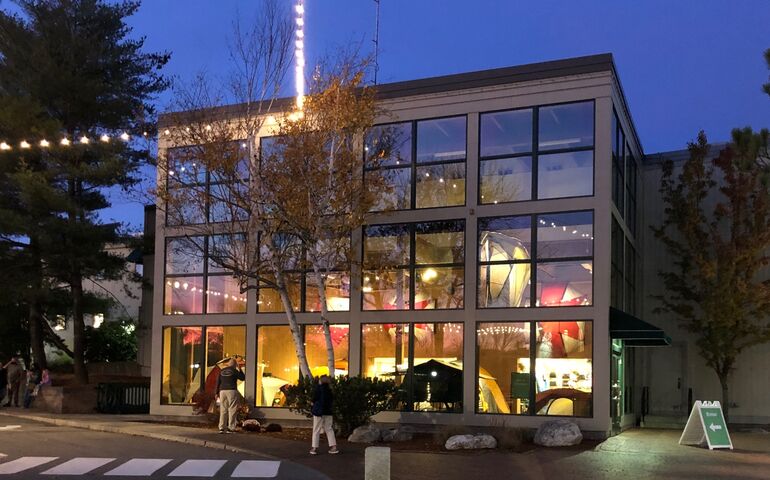Black Friday impact gives way to online sales
 Photo / PETER VAN ALLEN
Retailers like L.L.Bean that have an online presence will likely see a lift from this year's holiday shopping season.
Photo / PETER VAN ALLEN
Retailers like L.L.Bean that have an online presence will likely see a lift from this year's holiday shopping season.
The traditional start to the holiday shopping season — Black Friday, the day after Thanksgiving — could have a different feel this year.
As Maine retailers gear up for the holiday shopping season, they’re likely to see the shift toward online buying, an effect magnified by stay-at-home orders this year.
Nationwide, retail sales are expected to increase by 3.6% to 5.2%, to a total of $755.3 billion to $766.7 billion, according to the National Retail Federation’s most recent forecast. The numbers exclude sales from car dealers, gas stations and restaurants. Holiday sales last year rose by 4%, to $729.1 billion, and have averaged 3.5% in the past five years.
But retailers this year will depend less on Black Friday itself and its traditional "door-buster" sales.
Of the total sales forecast by the trade association, the major shift is expected to be in online and other non-store sales, which are expected to increase 20% to 30% this year, to $202.5 billion to $218.4 billion, up from $168.7 billion a year ago.
“We know this holiday season will be unlike any other, and retailers have planned ahead by investing billions of dollars to ensure the health and safety of their employees and customers,” Matthew Shay, president and CEO of the National Retail Federation, said in a news release on Monday.
Jack Kleinhenz, the trade association’s chief economist, said an improving economy will help stoke holiday shopping.
“Given the pandemic, there is uncertainty about consumers’ willingness to spend, but with the economy improving most have the ability to spend,” Kleinhenz said. “Consumers have experienced a difficult year but will likely spend more than anyone would have expected just a few months ago. After all they’ve been through, we think there’s going to be a psychological factor that they owe it to themselves and their families to have a better-than-normal holiday.”
While COVID flare ups will be a factor in spending, “as long as consumers remain confident and upbeat, they will spend for the holiday season,” he added.
Consumers have been helped by a strong stock market, rising home values and savings accounts boosted by government stimulus payments. Jobs and wages are growing, energy costs are low and consumers have spent less this year on personal services, travel and entertainment, the trade association said.
Shutdowns and stay-at-home orders earlier this year particularly hurt small and mid-sized retailers. For retailers, the recovery has been V-shaped, with October seeing a 10.6% increase in retail sales versus a year ago. In the first 10 months of the year, retail sales were up 6.4% compared to the same period a year ago.
E-commerce sales were particularly strong, up 36.7% in the third quarter. Online spending includes websites operated by bricks-and-mortar retailers, which have become major players in the online market as retail channels have merged.
While Black Friday is considered the traditional kickoff of the holiday shopping season — the day retailers’ books go into the black — the retail trade association defines the holiday season as Nov. 1 through Dec. 31.
On the hiring front, retailers expect to bring on 475,000 to 575,000 seasonal workers, and some retailers started hiring as early as October to get a jump on the holiday shopping season. Last year, they hired 562,000 workers.
The Washington, D.C.-based National Retail Federation, which claims to be the world’s largest retail trade association, says retail contributes $3.9 trillion to annual GDP and supports one in four U.S. jobs — 52 million working Americans.












0 Comments